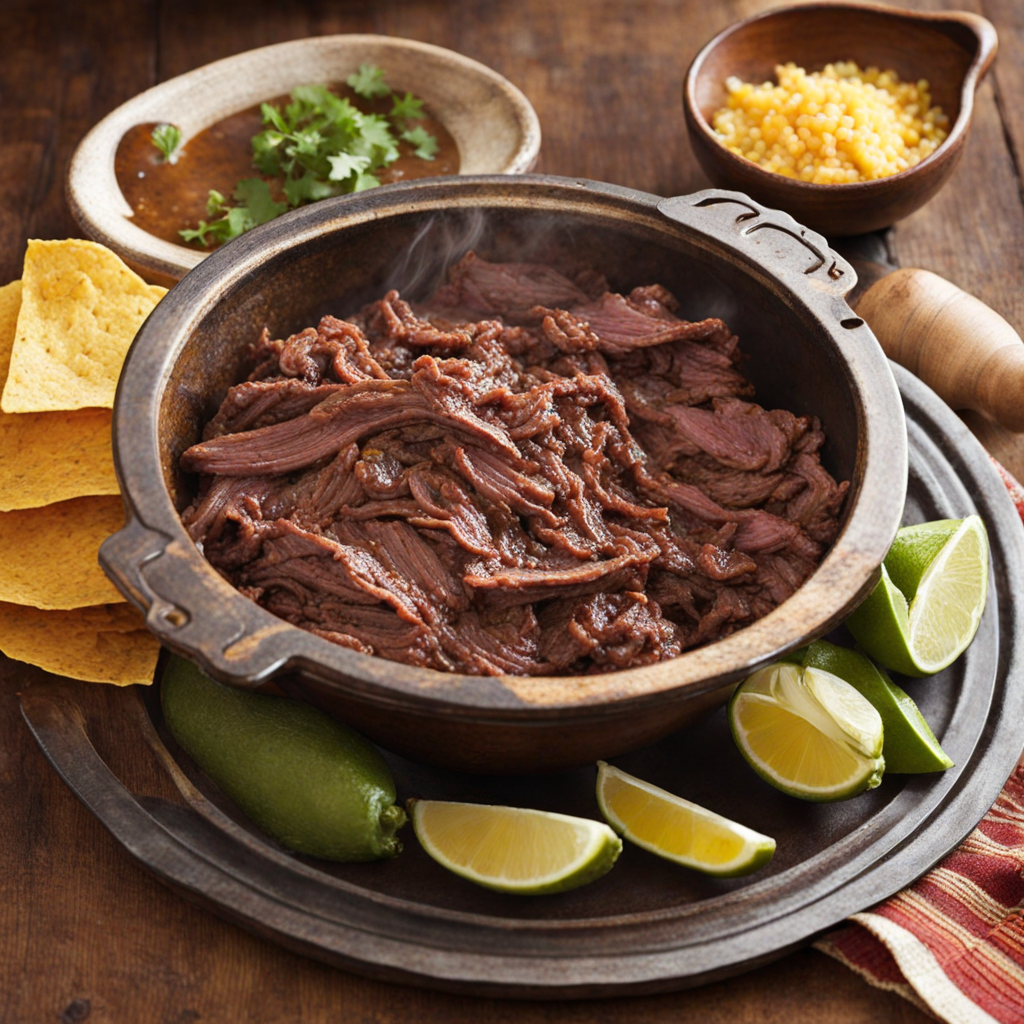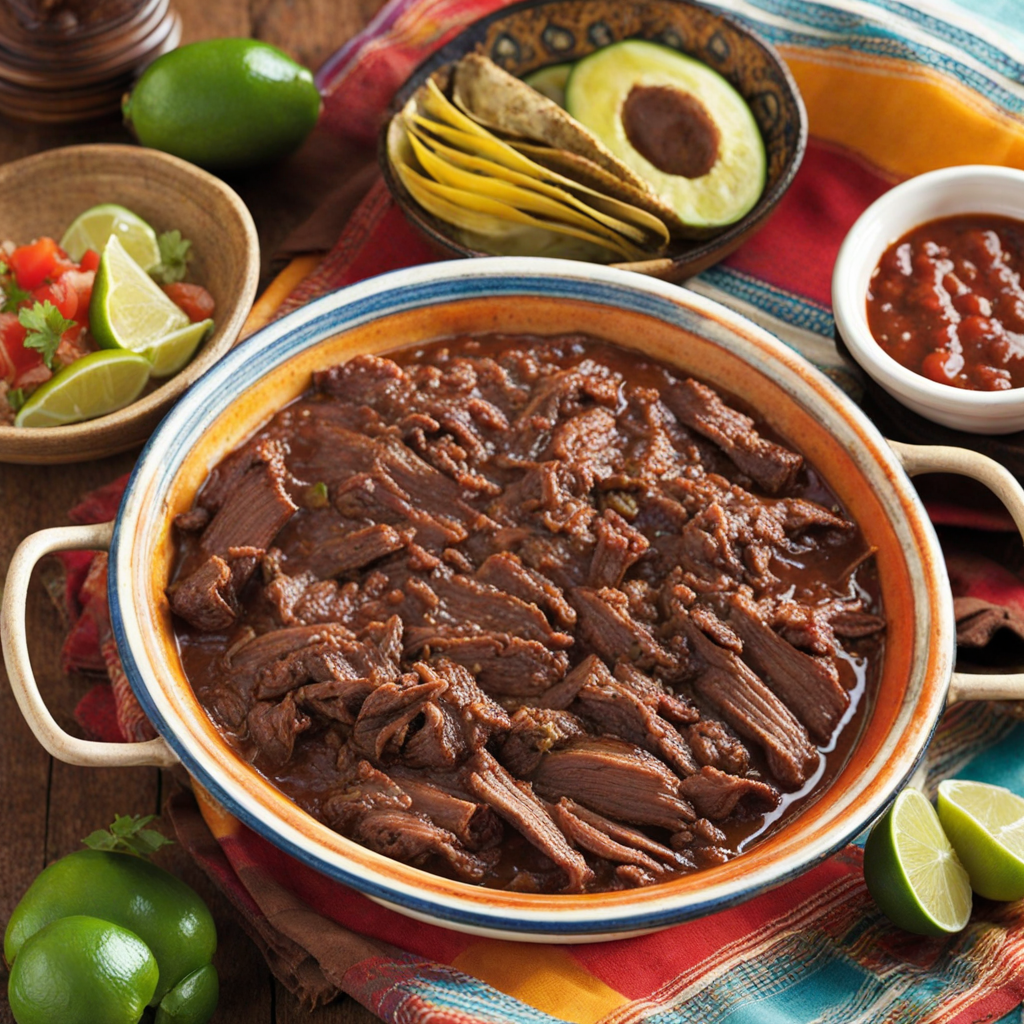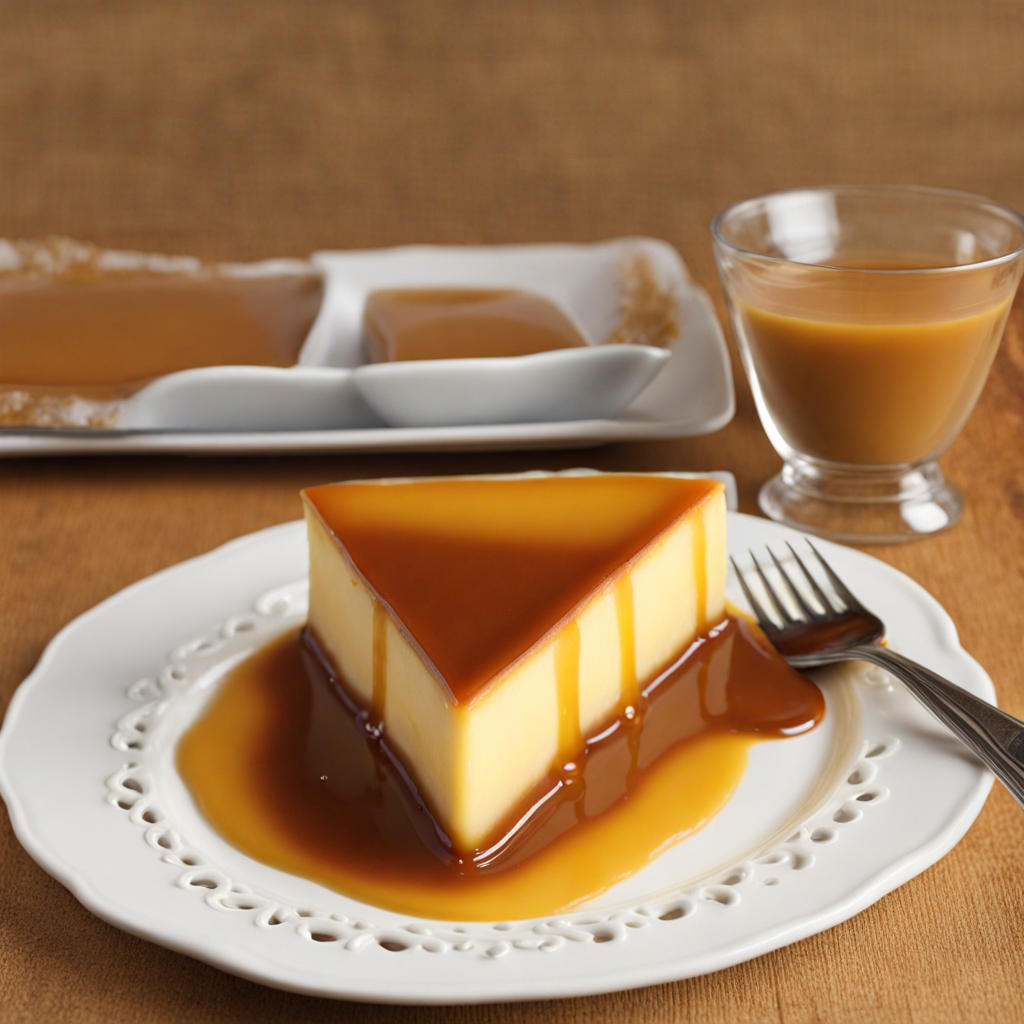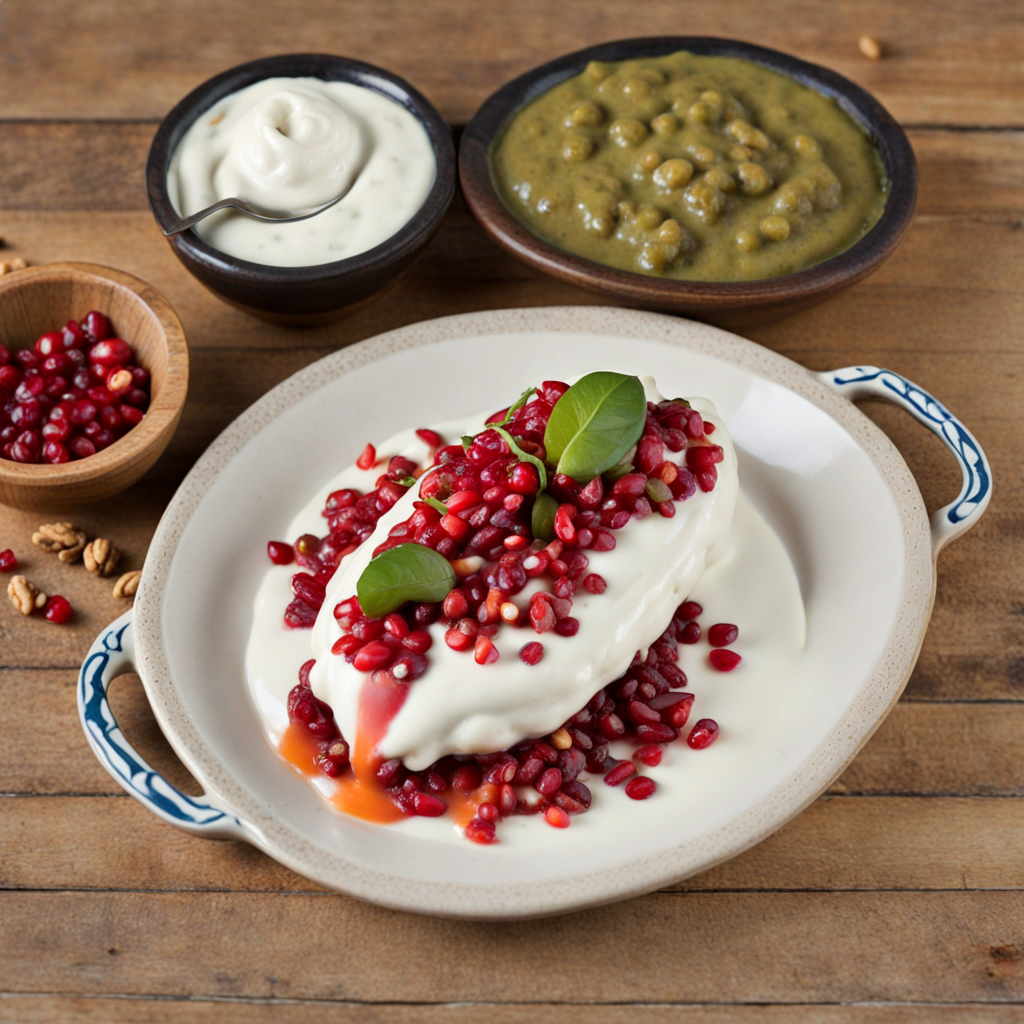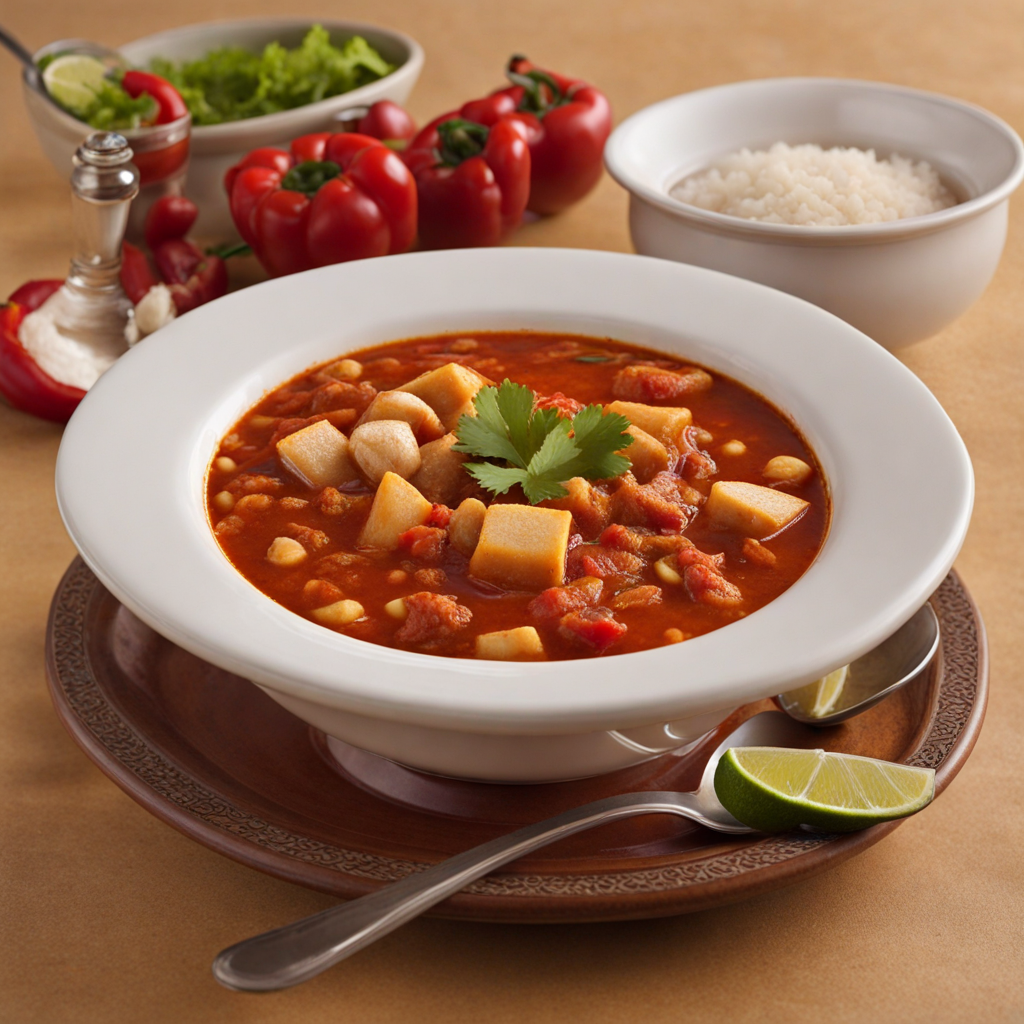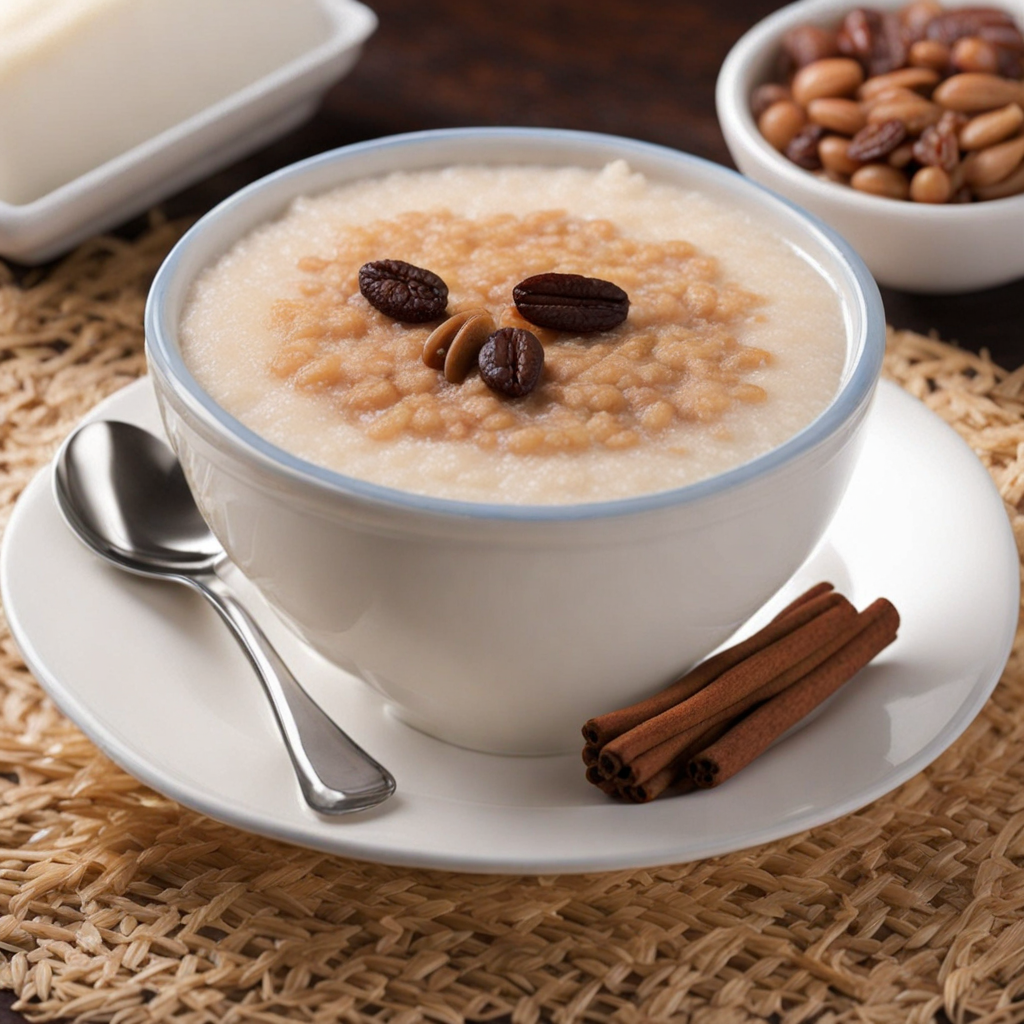Barbacoa
Barbacoa is a traditional Mexican dish that embodies the rich culinary heritage of the country. It typically involves slow-cooking meat—often lamb, goat, or beef—over an open fire or in a pit, which imparts a smoky flavor and tenderness that is hard to resist. The cooking process can take several hours, allowing the meat to become succulent and infused with aromatic spices. Commonly, the meat is seasoned with a blend of spices, including cumin, garlic, and bay leaves, and wrapped in maguey leaves during the cooking process, which keeps the moisture locked in and enhances the flavor. The result is a dish that is not only flavorful but also steeped in tradition. Once cooked, the meat is shredded and served in various ways, often in tacos, burritos, or with a side of rice and beans. The texture is melt-in-your-mouth tender, and the depth of flavor is accentuated by the accompanying salsas and fresh toppings like chopped onions, cilantro, and lime. Each bite offers a combination of savoriness and a hint of smokiness, making it a delightful experience for the palate. Barbacoa can be found in many regions across Mexico, each area adding its unique twist to the dish. In some regions, it may be served with a broth made from the cooking juices, while in others, it might be accompanied by spicy sauces or pickled vegetables. This versatility and regional diversity make barbacoa a must-try for anyone looking to explore authentic Mexican cuisine, as it not only showcases the flavors of the ingredients but also reflects the cultural significance of communal dining and celebration.
How It Became This Dish
The History of Barbacoa: A Culinary Tradition of Mexico Barbacoa, a cherished culinary tradition from Mexico, has roots that stretch deep into pre-Hispanic times, intertwining with the social and cultural fabric of the country. Today, it is not just a method of cooking; it embodies a rich history of indigenous practices, Spanish influence, and modern adaptations, making it a significant element of Mexican gastronomy. #### Origins and Pre-Hispanic Roots The term "barbacoa" is believed to be derived from the Taíno word "barabicu," which referred to a wooden structure used to cook meat over an open flame. However, the true origins of barbacoa can be traced back to the indigenous peoples of Mesoamerica, particularly the Tenochtitlan-based Aztecs and other tribes in the central and southern regions of modern-day Mexico. In these ancient cultures, barbacoa was not merely a cooking method; it was a ritualistic practice. The indigenous peoples would often use agave plants, which were abundant in the region, to create pits in the ground. They would fill these pits with hot stones and place meat—often lamb, goat, or even wild game—wrapped in leaves atop the stones. This slow-cooking method allowed the meat to become tender and infused with the flavors of the earth and herbs, creating a unique taste that was both savory and aromatic. The use of agave leaves was particularly significant, as they contributed moisture and flavor, enhancing the overall dish. #### Cultural Significance Barbacoa quickly became more than just food; it evolved into a cultural symbol. It was often served during important community celebrations, religious ceremonies, and family gatherings. The preparation and consumption of barbacoa fostered a sense of community and shared heritage among the people. It was a dish that brought families together, transcending social classes, as everyone—from the humble farmer to the elite—could enjoy this culinary delight. The ritual of preparing barbacoa was often imbued with spiritual significance. Animals were sometimes sacrificed for the feast, and the cooking process itself was accompanied by songs, prayers, and storytelling. It became a way to honor ancestors and nature, reinforcing the connection between the community and the divine. #### Spanish Influence and Adaptation With the arrival of Spanish colonizers in the 16th century, barbacoa began to evolve further. The Spaniards introduced new cooking techniques, animals, and ingredients, which influenced the traditional methods. The most significant change came with the introduction of beef, which gradually became a staple in barbacoa recipes. The Spanish also introduced spices and seasonings, such as cumin and oregano, which complemented the indigenous flavors, creating a fusion of culinary traditions. The Spanish influence on barbacoa not only changed its primary ingredients but also expanded its regional variations. Different areas of Mexico began to develop their own unique styles of barbacoa, influenced by local ingredients and customs. For instance, in the northern regions, barbacoa typically features beef, while in the southern states, lamb or goat meat is more common. #### Regional Variations As barbacoa spread throughout Mexico, it gave rise to numerous regional interpretations. Each area developed its own methods and flavors, reflecting the diverse landscapes and cultures of the country. 1. Barbacoa de Borrego: In the central regions, particularly in Hidalgo and Puebla, barbacoa de borrego (lamb barbacoa) is a beloved specialty. The lamb is marinated in a blend of spices and wrapped in maguey leaves before being cooked in an underground pit. This method results in succulent, moist meat that is often served with fresh tortillas, salsas, and a side of consommé. 2. Barbacoa de Res: In northern Mexico, particularly in states like Nuevo León and Zacatecas, barbacoa de res (beef barbacoa) is more prevalent. The meat is often seasoned with a variety of spices and cooked in a similar underground method, resulting in a hearty and flavorful dish that is commonly enjoyed during celebrations or family gatherings. 3. Barbacoa de Puerco: Some regions have adapted barbacoa to include pork, reflecting local tastes and availability. This variation often features marinated pork cooked slowly until it reaches a tender, pull-apart consistency. 4. Barbacoa de Chivo: Goat barbacoa is particularly popular in rural areas, where goats are often raised. The rich flavor of goat is enhanced through traditional cooking methods, making it a sought-after dish in many households. #### Modern Developments and Global Influence In recent years, barbacoa has experienced a renaissance, both within Mexico and globally. The rise of Mexican cuisine's popularity in the United States and beyond has introduced barbacoa to a broader audience. It is now featured in various culinary contexts, from food trucks to upscale restaurants, often served in tacos, burritos, and bowls. The modern interpretation of barbacoa often retains the traditional cooking methods while adapting to contemporary tastes. For example, many chefs are experimenting with the types of meat used and incorporating different marinades and spices. The essence of barbacoa as a communal dish remains intact, with many eateries emphasizing the importance of sharing food with loved ones. #### Conclusion Barbacoa is more than just a method of cooking; it is a living testament to Mexico's rich culinary heritage. From its ancient origins among indigenous peoples to its evolution through Spanish colonization and regional adaptations, barbacoa has woven itself into the heart of Mexican culture. Today, it continues to thrive as a beloved dish, symbolizing community, tradition, and the celebration of flavors. As we indulge in barbacoa, we partake in a history that spans centuries, a narrative of resilience, adaptation, and the enduring power of food to bring people together. Whether enjoyed in a bustling street market or a family gathering, barbacoa remains a delicious link to Mexico’s past and a bright reflection of its vibrant culinary future.
You may like
Discover local flavors from Mexico


